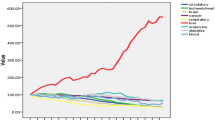Abstract
The gut and the liver are the key organs in nutrient absorption and metabolism. Bile acids, drugs, and toxins undergo extensive enterohepatic circulation. Bile acids play a major role in several hepatic and intestinal diseases. Endotoxins deriving from intestinal Gram-negative bacteria are important in the pathogenesis of liver and systemic diseases. Chronic liver diseases can influence gastrointestinal motility, which together with other factors may contribute to bacterial overgrowth and in patients with ascites to an increased risk of spontaneous bacterial peritonitis. Patients with end-stage liver disease frequently develop portal hypertension leading to varices, gastric vascular ectasia, and portal hypertensive gastroenteropathy. Several liver and biliary abnormalities are observed in patients with inflammatory bowel disease (primary sclerosing cholangitis, autoimmune hepatitis, cholelithiasis). The primary defect in hemochromatosis is located in the intestine, causing an inappropriate increase in iron absorption, and the liver is the site of earliest and heaviest iron deposition. Elevated transaminases are observed in many patients with celiac disease, and steatohepatitis frequently develops in patients with jejunoileal bypass and short bowel syndrome. Furthermore, the liver is the primary organ for metastasis of intestinal cancer. Many viral, bacterial, fungal, and parasitic diseases affect the intestine as well as the liver and the biliary tract.
Similar content being viewed by others
Author information
Authors and Affiliations
Additional information
Accepted: 8 March 2000
Rights and permissions
About this article
Cite this article
Zeuzem, S. Gut-liver axis. Int J Colorect Dis 15, 59–82 (2000). https://doi.org/10.1007/s003840050236
Issue Date:
DOI: https://doi.org/10.1007/s003840050236




